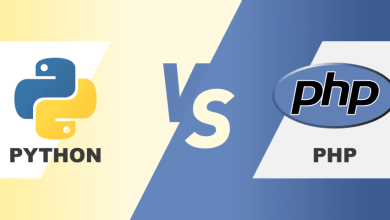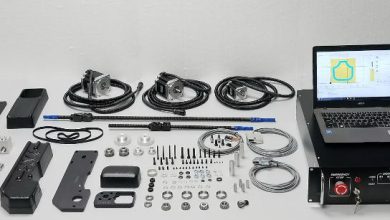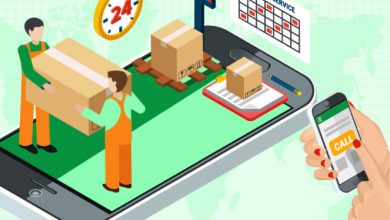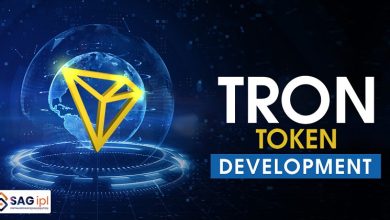How Data Visualization Connects To AI

While data visualization is increasingly popular, many people still don’t know it. At its core, data visualization refers to any technique used to represent data in a graphic format so that humans can easily understand patterns and trends within the information. While this definition may seem simple, there are many different ways to visually represent information, each of which has its own merits and drawbacks. By exploring various types of data visualization and how they relate to artificial intelligence and machine learning. You can find out how these fields connect in more detail.
Why Data Visualization Is Important In The Digital World
Data visualization is an essential part of our lives these days. With all of our advancements in technology, we can see so much data flying past us at a moment’s notice. Without visualizing that data, it would be impossible to understand what we see on our screens. Let’s look at why interactive data visualization is so important and how it helps contribute to artificial intelligence (AI).
How Does Data Visualization Work? How does data visualization work? It depends on what you are trying to visualize. But there are two main types: 2D and 3D. 2D data visualization uses graphs, charts, or tables to present information in an easy-to-understand format. This type of visualization is often used for numerical data such as percentages or statistics.
On top of that, 2D data visualization and big data also have many subcategories, such as infographics and dashboards. Infographics combine multiple elements into one image. While dashboards use graphs or charts to display different types of information from various sources.
Who Uses Data Visualization?
The list of who uses data visualization is probably far too exhaustive to mention, but here are a few of those who regularly take advantage of it: Google, Facebook, Kaggle, Twitter, and LinkedIn. While all of these companies have their internal data science teams or departments that generate graphics and visualizations regularly, each also has users—large amounts of them—who also demand access to data.
In other words, you don’t need to be a trained statistician or mathematician to use data visualization; you need a good understanding of what you want and some basic skills on how to use your tools. Anyone can learn how to visualize data, even if they don’t think they can. If you feel like you aren’t up for learning new things, try using an online tool like Tableau Public or Plotly (or both).
How Can Data Be Scanned For Insight?
According to a recent study, less than 10% of it is analyzed out of all of that data collected. That’s a serious loss! Another study from Accenture discovered that only 36% of data experts think their companies successfully turn raw data into intelligence. However, even though most companies may not be getting enough out of their data, it is possible to utilize it. By using Artificial Intelligence and Data Mining Techniques, you can connect with your audience differently.
One company doing just that is Accenture, and they created an infographic to show how they’re able to do so. Their tool allows users to upload any document or file, and then it will automatically convert that information into a visual format. This is where AI comes in because its software uses Machine Learning algorithms to sort through hundreds of thousands of pages to find patterns within each document.
It then matches those patterns against similar documents and determines what should be grouped based on those similarities. The result? A visually appealing graphic that shows what patterns exist within each document and highlights any outliers that don’t fit within these groups. This allows users to quickly scan through large amounts of information without having to read every word on every page like you would have had to before now.
What Can Kind Of Tool Be Used For Data Analysis?
The key when looking for which tool is best for data analysis is first to determine what type of analytical process you will undertake. In other words, how do you plan on using your data? Once that’s determined, it’s simply a matter of picking a tool that supports those processes.
A few common types of analytical processes are:
- Descriptive analytics (generating visualizations).
- Prescriptive analytics (predicting future events).
- Diagnostic analytics (understanding what happened in an event).
Descriptive analytics uses visualizations (including dashboards) to describe trends and patterns over time in your data sets.
Prescriptive analytics uses predictive models to predict events using historical and current information from available resources such as stock markets or social media feeds.
Diagnostic analytics involves interpreting data to understand what happened during an event. For example, if you have a store with security cameras installed. You can use these tools to figure out who broke into your store and stole merchandise.
What Trends Are Affecting Data Analysis And Scanning Tools?
Data visualization is commonly used as a simple way to present information visually. But it’s also essential in analyzing large quantities of data that might be too complex for humans to understand at first glance.
In short, data visualizations aid in making sense of massive amounts of data and help with decision-making and problem-solving. Also, visualization tools help identify issues or anomalies within datasets that could indicate a potential problem or serious failure.
When there is an abnormality or a mistake within a database, it often takes human eyes and minds to figure out what’s wrong. Still, advancements like artificial intelligence (AI) can help us get there faster by automatically scanning for errors.
Artificial intelligence uses pattern recognition to identify problems within big data sets, which means that computers can now scan through huge volumes of information more quickly than ever before.
While AI has yet to replace human analysis fully, it has already made significant strides in speeding up our workflows. This technology is evolving rapidly and will continue to grow smarter over time. By combining these two technologies—data visualization and artificial intelligence—you have an even greater opportunity to make quick decisions based on accurate information gleaned from vast databases.
The Future Of Data Analysis, Scanning, And Tools
There’s no doubt that data analysis is a massive part of many careers and jobs. It’s quickly becoming a major pillar of many companies, regardless of industry or sector. And as we continue to move forward into an increasingly technological future, data analysis is expected to evolve significantly over time, even faster than today’s pace. For example, we’re already seeing things like self-driving cars on our streets, along with countless other high-tech developments, but these might be considered old technology in just a few years! As fast as things are moving forward now, they’re only going to accelerate more and more over time.





